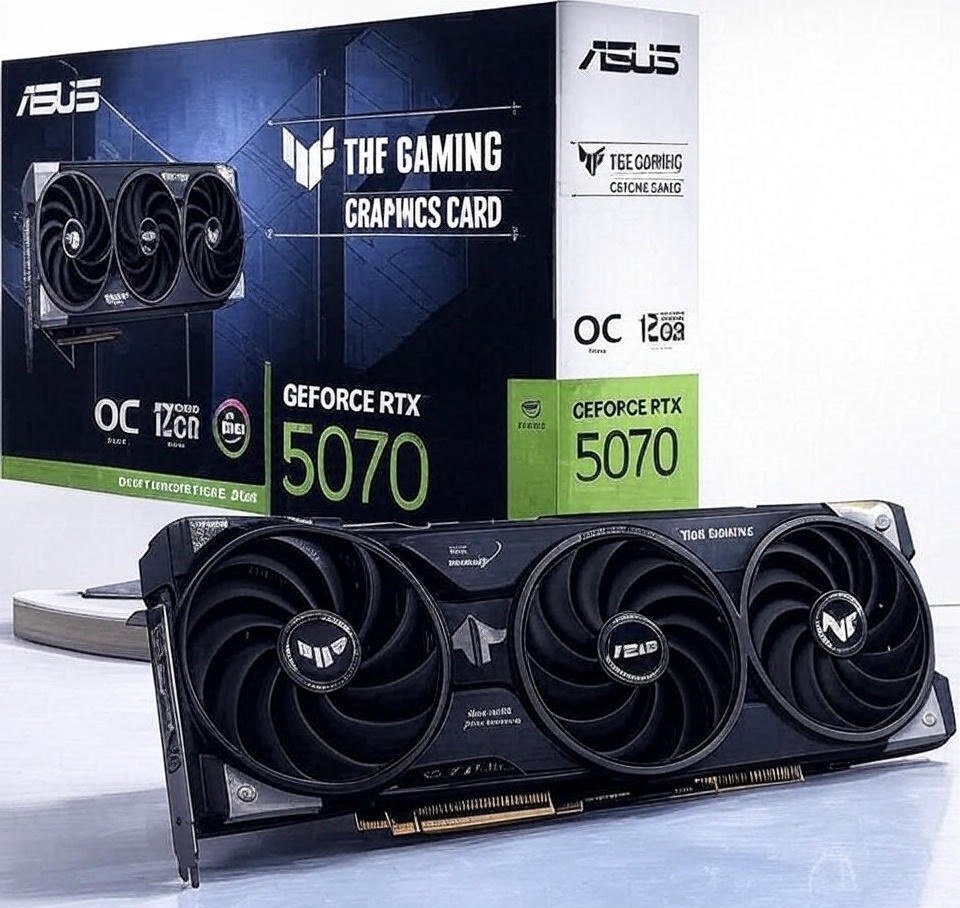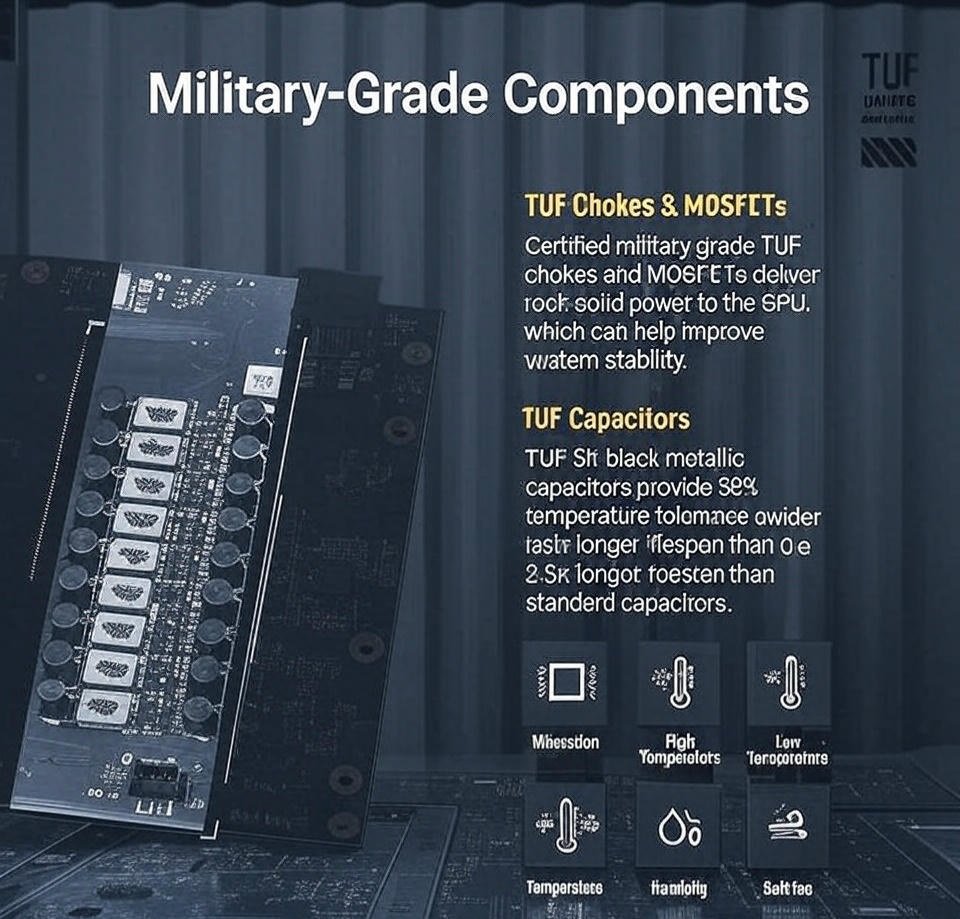
Introduction
The launch of Nvidia’s RTX 50-series has generated significant buzz, with mixed reactions from the tech community. Built with gamers and performance enthusiasts in mind, this card promises solid 1440p gameplay, efficient cooling, and potential for overclocking—all wrapped in Asus’s signature rugged design. But with pricing still unpredictable and stock fluctuating, is this the GPU you should be aiming for, or is it better to wait it out? In this article, we’ll dive into the real-world performance, thermal behavior, and whether the Asus TUF RTX edition is worth the extra premium.
Everything You Should Know About the Asus TUF RTX 5070 Ti
Between the unpredictable pricing and stock shortages, it’s been tough for gamers to figure out what’s worth buying. One card that stands out in the lineup, though, is the RTX 5070 Ti, especially the Asus TUF Gaming edition. It’s not the most affordable, but it’s one of the more well-rounded options out there right now.
So, if you’re wondering whether this GPU should be in your next build, here’s a straightforward breakdown of what the Asus TUF RTX 5070 Ti brings to the table — no hype, just the facts.
Design & Build Quality of Asus TUF RTX

The TUF series from Asus is known for its rugged, no-nonsense design, and this one follows that tradition. It’s finished in a kind of slate gray with subtle military styling, which should fit into just about any PC build. It’s a big card — not quite 4090-level huge, but definitely larger than the average 70-class GPU from previous generations.
On the back, you’re looking at:
- 3 DisplayPort 2.1 outputs
- 2 HDMI 2.1 ports
- Dual BIOS switch
- RGB-lit TUF logo
And yes, that now-familiar 16-pin power connector
Now, before you worry — this card doesn’t draw nearly as much power as Nvidia’s top-tier options, so the connector shouldn’t be a problem as long as you use it properly. Asus even includes a 3x 8-pin adapter in the box just to make things easier.
Cooling & Noise Levels
Thermal performance is where the TUF really earns its name. With a triple-fan cooler and a beefy heatsink, the card stays around 59–60°C under load in a typical 21°C room. Even better, the fans are quiet — most of the time, you’ll hear your case fans before the GPU spins up.
If you plan on pushing the card harder with overclocking, the TUF cooler has you covered. It doesn’t just look the part — it performs too.
Gaming Performance of Asus TUF RTX

Now onto what really matters: performance. The 5070 Ti is a solid performer, sitting close to the 4080 in a lot of modern titles, especially at 1440p and even some 4K scenarios.
Here’s how it handles some popular games:
Cyberpunk 2077 (1440p, Ultra with DLSS Balanced): Smooth gameplay, even with ray tracing. Path tracing drops performance, but it’s still playable — and stunning.
Ghost of Tsushima (4K, Very High, DLSS Quality): Runs in the 90–100 FPS range. For a GPU in this price bracket, that’s very impressive.
Call of Duty: Warzone (1440p, Extreme): Easily over 200 FPS, which makes this perfect for high refresh rate monitors.
In short, it’s a great card for high-end 1440p gaming and can even handle 4K if you’re okay using DLSS.
DLSS & Frame Generation of Asus TUF RTX

DLSS is a big part of the 50-series experience, and the 5070 Ti benefits from the new Transformer-based model that improves image quality while boosting FPS. You can also enable Frame Generation for an extra boost, especially in demanding games with ray tracing.
That said, while Frame Gen helps performance, it can sometimes introduce artifacts or motion blur, especially if path tracing is on. It’s not a dealbreaker, but it’s something to remember if you’re sensitive to visual changes.
Overclocking Potential Asus TUF RTX

Here’s where things get interesting. The TUF 5070 Ti has some real overclocking headroom. With just a bit of tuning, you can bump the clock speed from around 2,990 MHz up to 3,200+ MHz. That can give you up to a 10% FPS increase depending on the game and resolution.
Of course, your mileage may vary — overclocking always depends on the silicon lottery — but it’s nice to see that Asus left some breathing room for tinkerers.
Is It Worth It?
That’s the big question — and the answer depends on the price. You’re getting excellent cooling, great build quality, solid performance, and all the latest features like DLSS 3 and Frame Generation.
Final Thoughts
The RTX 5070 Ti, especially in this TUF Gaming form, is one of the better-balanced cards from Nvidia’s 50-series. It’s powerful, well-built, and surprisingly quiet. But like everything else in the GPU world, the price is king.
If it lands near MSRP and stays there, it’s a fantastic option for anyone gaming at 1440p or even dabbling in 4K. If not, patience might save you some serious cash — or land you a better deal down the line.
1. Cyberpunk 2077 (1440p, Ultra with DLSS Balanced):
“Even at 1440p with ultra settings and DLSS on balanced mode, Cyberpunk 2077 delivers consistently smooth performance — ray tracing included.”
2. Ghost of Tsushima (4K, Very High, DLSS Quality):
The Asus TUF RTX 5070 Ti’s considerable overclocking capability is one of its best features. Users may extract more performance without sacrificing stability with the right settings.
3. The TUF 5070 Ti has some real overclocking headroom:
“There’s plenty of room for overclocking with the TUF 5070 Ti, making it a solid choice for enthusiasts looking to push performance further.”
4. That’s the big question — and the answer depends on the price:
“Ultimately, whether it’s worth it comes down to how much it costs.”
FAQs
Q1.What games run best on the RTX 5070 Ti?
utmost mod AAA titles run easily, especially at 1440p, including games like Cyberpunk 2077 and Ghost of Tsushima.
Q2. How much does the Asus TUF 5070 Ti cost?
Prices vary, but anticipate it to be slightly above MSRP due to demand and vacancy.
Q3. Does the RTX 5070 Ti support 4K gaming?
Yes, it can handle 4K gaming, however for the stylish experience, 1440p is ideal.
Q4. How quiet is the Asus TUF 5070 Ti under loading?
It runs fairly quiet thanks to its effective cooling design, with utmost noise coming from case fans.
Q5. How much power does the RTX 5070 Ti demand?
It uses a 16- pin connector and generally draws around 220 – 250 watts under loading, so a 650W or advanced PSU is recommended.
Q6. Does the Asus TUF RTX 5070 Ti support beam following and DLSS?
Absolutely. It supports both real- time beam following and DLSS 3.0, including Frame Generation, for better illustrations and smoother gameplay.
Q7. Is the RTX 5070 Ti worth buying right now?
It depends on the price. However, it’s a great option, If you can get it near MSRP. But exaggerated prices may reduce its overall value.
Q8. How much VRAM does the RTX 5070 Ti have?
It comes with 8GB of GDDR6 memory.
Q9. Is the RTX 5070 Ti better than the RTX 4070 Ti?
Yes, the 5070 Ti generally offers better performance than the 4070 Ti.


